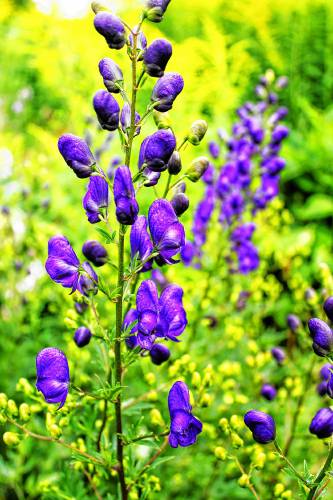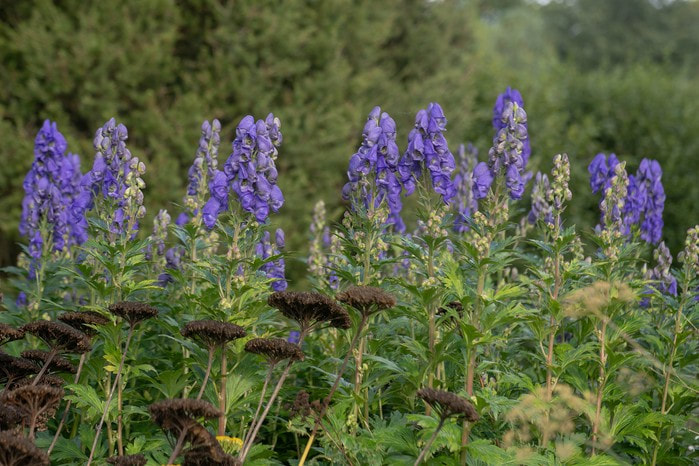Monkshood
Aconitum reclinatum
Monkshood (Aconitum) also known as wolfsbane and common aconite, is a beautiful, stately perennial with tall spires of purple-blue flowers from mid- to late summer. It looks similar to delphinium, to which it's related. It's a great plant for the middle or back of a cottage or herbaceous border. Its nectar- and pollen-rich flowers are attractive to a range of pollinators, especially bumblebees.
Monkshood is found growing as a wild flower in mountain meadows all over the northern hemisphere. It's named after its hooded flowers, which are said to resemble the cowls of monks.
All parts of the monkshood plant, especially the roots, are poisonous. One of the toxins it contains, aconitine, was used as a poison on spears and arrows in ancient times and was used to kill wolves (hence its other common name, wolfsbane). It's also said that the Romans used monkshood as an execution method. Wear gloves when handling as the toxins can potentially pass through the skin, and on no account ingest any part of the plant, as this can be fatal.
Monkshood is found growing as a wild flower in mountain meadows all over the northern hemisphere. It's named after its hooded flowers, which are said to resemble the cowls of monks.
All parts of the monkshood plant, especially the roots, are poisonous. One of the toxins it contains, aconitine, was used as a poison on spears and arrows in ancient times and was used to kill wolves (hence its other common name, wolfsbane). It's also said that the Romans used monkshood as an execution method. Wear gloves when handling as the toxins can potentially pass through the skin, and on no account ingest any part of the plant, as this can be fatal.

